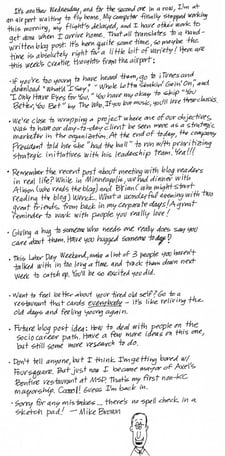 A senior market research executive at a well-known CPG company asked about getting brand managers to narrow the number of questions they want answered in research studies. They specialize in manufacturing long lists of "highest priority" questions because with no ownership of the necessary research resources, it's easy to deem everything important.
A senior market research executive at a well-known CPG company asked about getting brand managers to narrow the number of questions they want answered in research studies. They specialize in manufacturing long lists of "highest priority" questions because with no ownership of the necessary research resources, it's easy to deem everything important.
One key we've found is ensuring there's some "pain" involved in prioritization. This means when asking someone to prioritize, we set up the task to ensure that in picking something they want, they're forced to identify other alternatives as less attractive.
We do this by introducing cost, resource, or time constraints into strategic prioritization. This may be through incorporating actual data or simply creating an artificially constrained resource (i.e., think colored dots for voting).
We also frequently add text descriptions to more typical A/B/C or 1/2/3 prioritization scales. It can be challenging to get the scale descriptions written properly. When it's done properly, however, it's much more effective to pick between A and B priorities when everyone has the same understanding of what that means.
These creative approaches go a long way toward quickening and improving the effectiveness of any strategic prioritization effort. - Mike Brown



